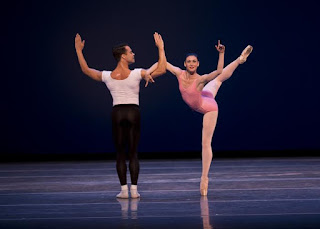Music/Ballet: Two Great 20th century artists

Last night I attended a performance of the New York City Ballet at Lincoln Center. It would be better termed a concert of the New York City Ballet Orchestra, with dancing. That was great! Ballet is something I do not always enjoy. I have noted through the years that people enjoy it for a variety of reasons: 1. Grandeur, epic sweeping drama (e.g. Swan Lake, Sleeping Beauty ) 2. Personality cult of specific dancers (opera has these kind of swooning fans too) 3. Athletic performance comparisons, like watching gymnastics at the Olympics 4. Titillation (I remember a colleague a few years ago who pointed out only which guys did and did not have great bodies). As for me, I really enjoy those ballets where watching the dance amplifies my appreciation for the music, which also needs to be excellent for me to have a good time. This cultural amplification effect occurs in a different way in opera, where the music amplifies the plot. Ballet amplification was on display last night in the all...
